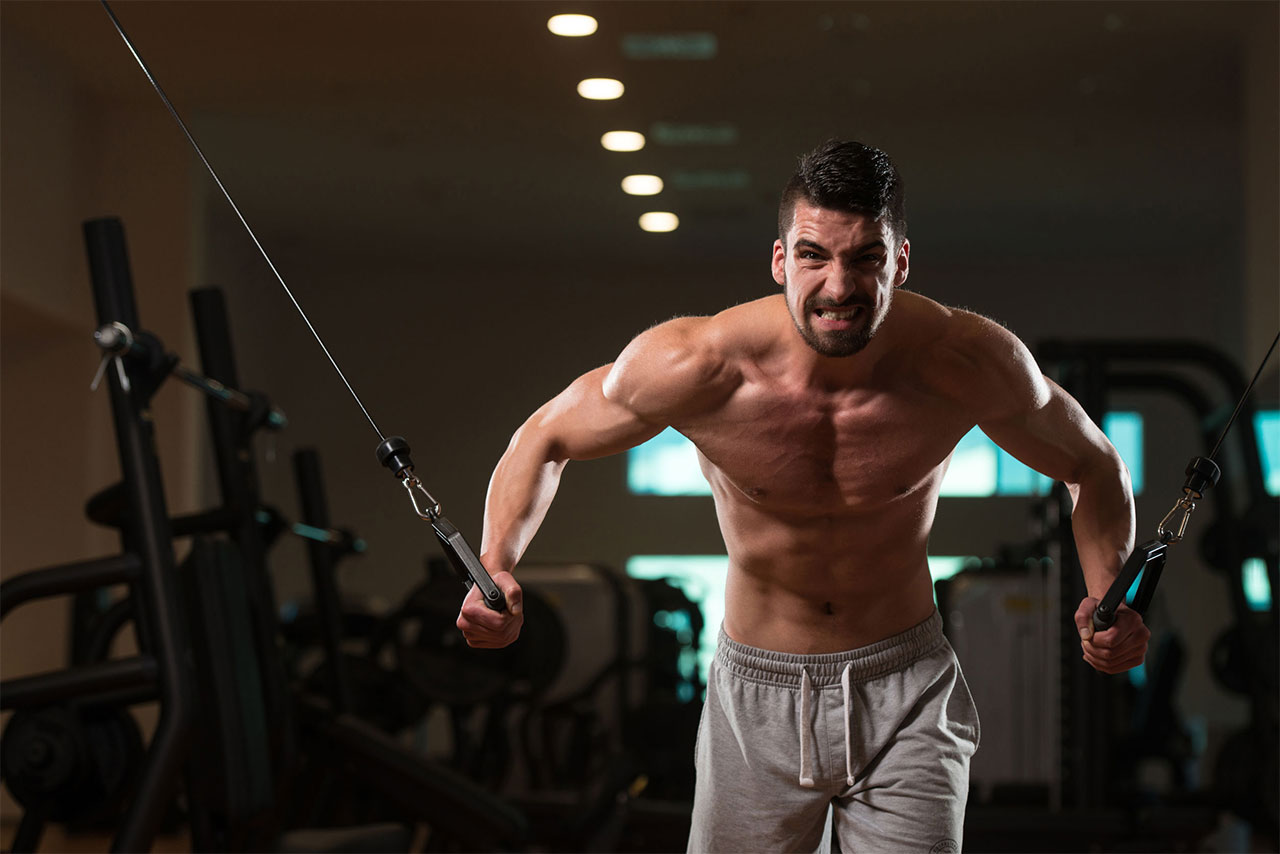Introduction
In this workout, we will give you the perfect combination of exercises, sets and repetitions, that express workout parameters, suitable for the shredding phase, when your goals are losing fat and defining the musculature.
This workout, structured around basic and isolated exercises, done with moderate intensity, will allow you to shape up your pectoral muscles and get them to top, crisp, striated condition.
The idea in mind here is staying away from failure, while keeping low rest times. This allows for bigger total volume and density of the workout, which is not specifically aimed at muscle growth, but is pleasantly shaping during the fat-shredding phase, which this workout is designed for.
Workout Priorities
The workout prioritizes the most underdeveloped chest sector for most trainees- The upper chest.
The priority is realized by including incline pushing movements at the beginning of the workout, after which, there is a transition to a middle/lower chest focus, expressed through lever and cable exercises. These last two exercises are essentially isolated and aimed for this phase of training specifically.
The Workout
| Exercise | Sets | Repetitions |
|---|---|---|
| Incline Push-Ups | 2 | 15 |
| Incline Dumbbell Bench Press | 5 | 12,12,12,12,10 |
| Flat Barbell Bench Press | 3 | 12 |
| Pec Deck | 3 | 12 |
| Cable Crossover | 3 | 12 |
Exercise Map
Incline Push-Ups
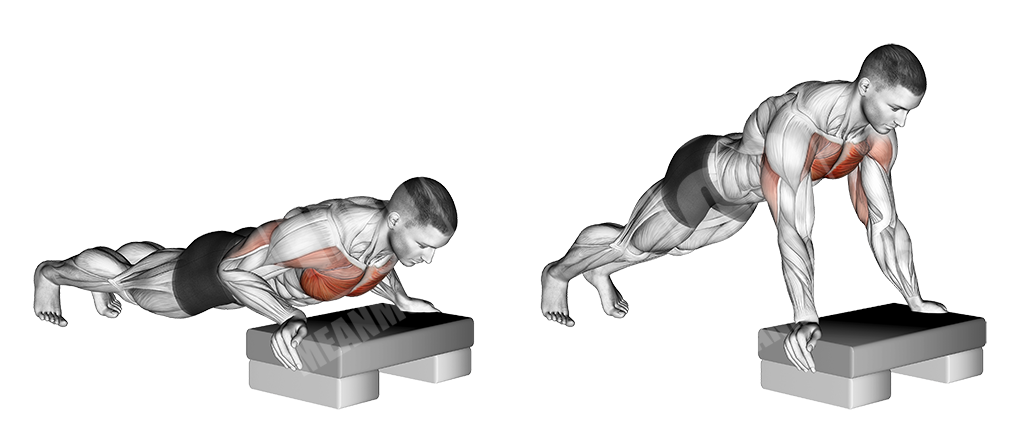

Execution
- Set up a pad on the floor
- Place your hands on the sides as illustrated
- Keep body and legs straight
- Keep feet slightly apart
- Look down to the pad
- Let your body down slowly, until your chest touches the pad slightly
- Push up explosively, without locking out the elbows
- Repeat
Incline Dumbbell Bench Press
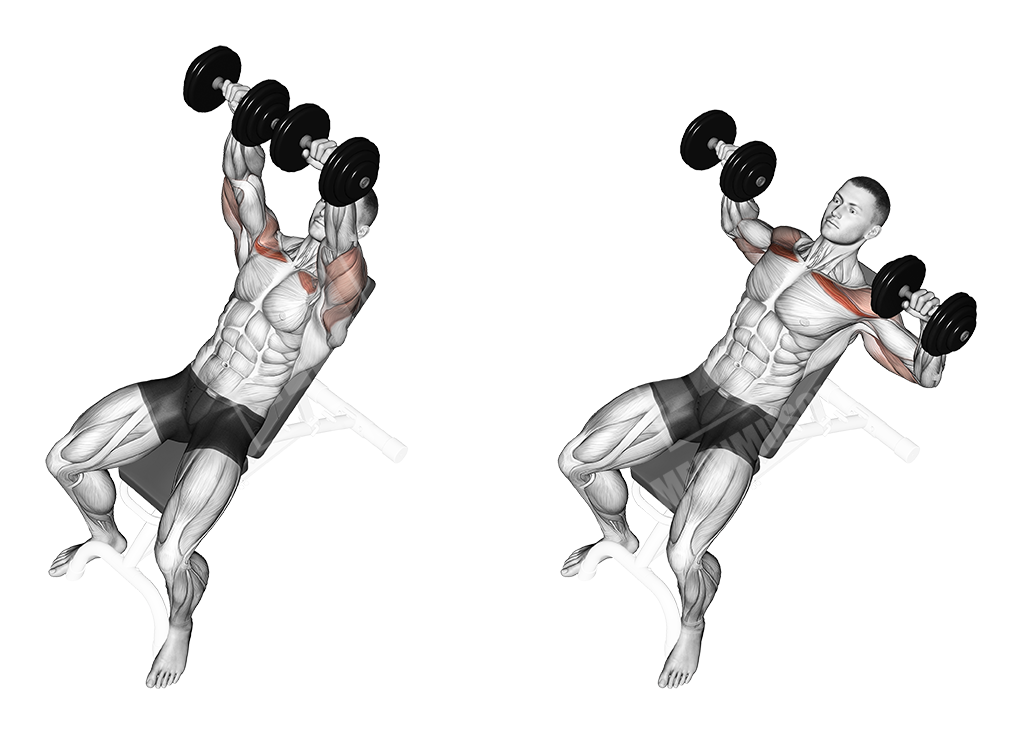

Execution
- Set up the bench on a 45-degree angle
- Grab the dumbbells and sit down, placing them on your legs
- Lie down on your back comfortably and raise the dumbbells above your head
- Keep elbows slightly bent so that they are not locked out
- Rest your head back- don’t lift it up to avoid excessive neck tension
- Let the dumbbells down slowly, until they are by the sides of your upper chest
Barbell Bench Press
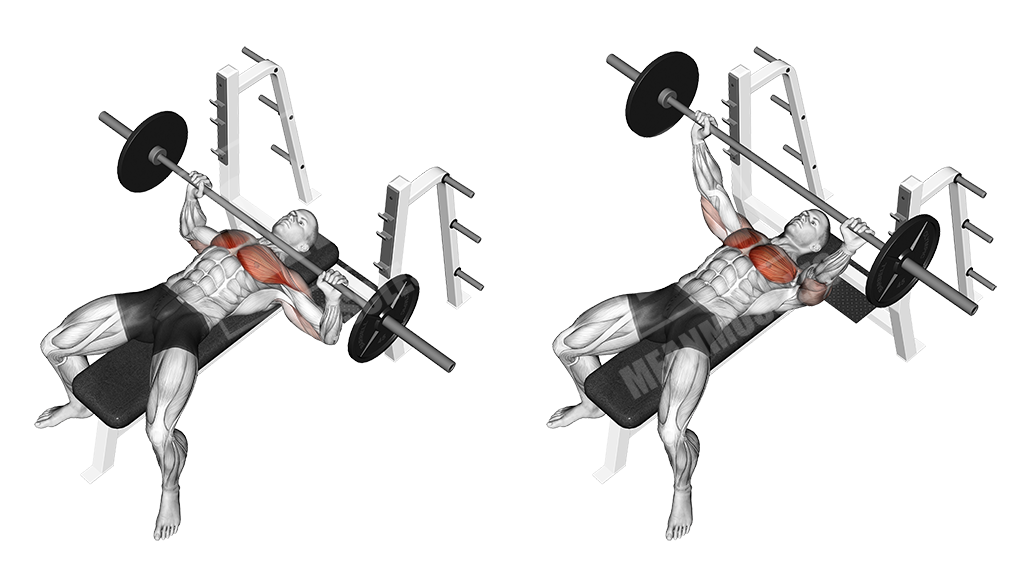

Execution
- Lie down on the bench and grab the bar wider than shoulder width
- Keep your butt on the bench and place the legs stably on the ground
- Un-rack the barbell and bend elbows slightly so that they are not locked out
- Let the bar down slowly to the lower portion of your chest, until it touches slightly (don’t rest the bar on your chest)
- Push up explosively to the initial position- No lockout
Pec Deck
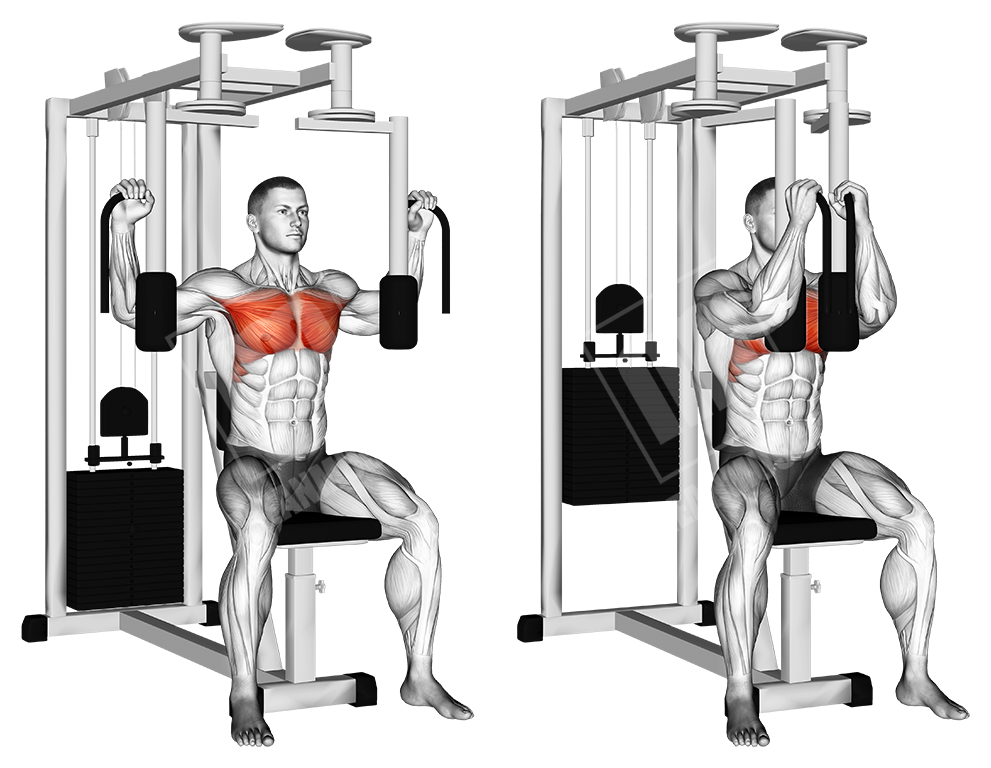

Execution
- Set up the seat so that you can complete the exercise with arms being at a 90-degree angle (Upper arms parallel to the ground)
- Sit down and rest your back on the backrest
- Place your arms on the pads and grab the handles
- Puff up your chest
- Push the lever, contracting your chest
- Hold the contraction briefly
- Let the weight down but not completely
- Repeat
Cable Crossover
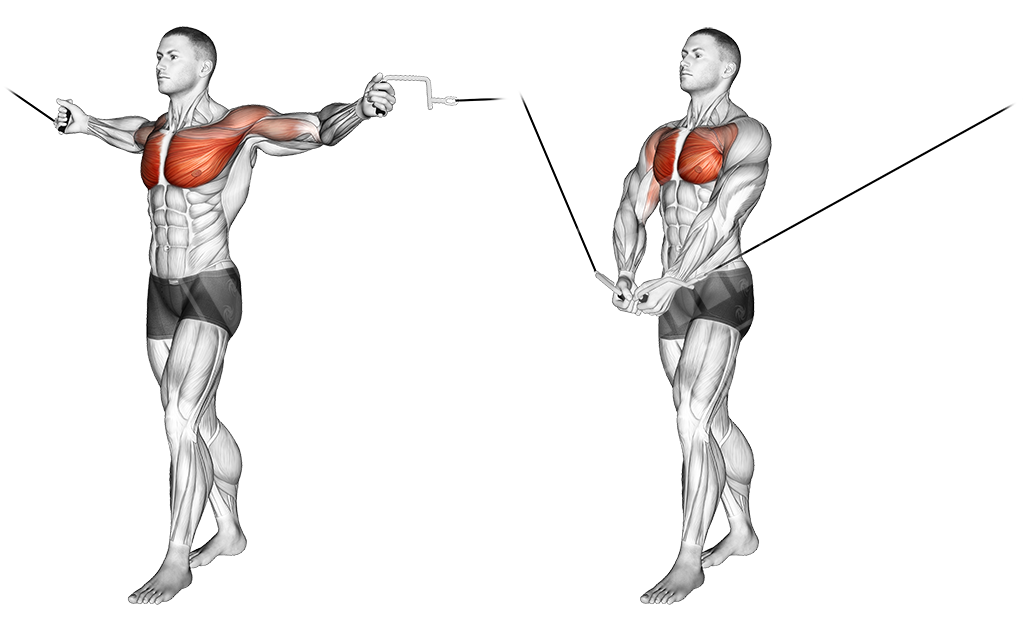

Execution
- Choose an appropriate weight, that will allow you to do 12 repetitions away from failure
- Grab both pulleys and stand right in the center of the machine
- Keep your back straight and head looking forward
- Keep your elbows slightly bent and keep them in that static position
- Push the cables down, contracting the chest musculature
- Hold the contraction briefly
- Slowly let your arms go up to the initial position and stretch the chest out
- Repeat
Workout Tips
As we are emphasizing on reminding you this, the workout is specific for the CUTTING phase.
Other key points for the fat-shredding phase
- Iso-Tension:
Flexing after workout and between sets, emphasizing on the trained muscle group (in this case, chest) will also help you carve the muscle in details. Squeeze every fiber, hold the contraction for up to 15 seconds and release slowly
- Stretching:
Stretching and iso tension can be combined, for a pleasant mind-muscle connecting effect, that will also help the muscle relax and recover faster after heavy work. To use this combination, simply do the following- Squeeze, hold contraction, release slowly and stretch, while contracting the opposing muscle group (Antagonist, e.g- Squeeze bicep, stretch bicep and contract the triceps, same can be done with chest and back, quads and hamstrings, abs and spinal erectors)
- Peak flexion:
To include the iso-tension principle within the weight workout, you can use the peak flexion method. This is a simple, controlled contraction at the top of each repetition, which is held for up to 3 seconds. Again- Be careful not to go too hard, since the full contraction of some muscles requires a joint lock out, which can be dangerous when done under big resistance and explosively.
- Rest times:
To express a higher density of the workload, try and keep your rest times between sets and exercises, no more than 30-40 seconds. This higher density (more total weight moved for less time), will allow for better muscle pumps and more total time under tension for less time, which will ultimately and inevitably shape you up if of course, combined with proper nutrition for optimal recovery afterwards.
- Proper nutrition:
It is very important to have FUEL for such workouts, especially when you are on a caloric deficit to lose weight. A dense workout like this one will leave your energetic reserves depleted, meaning that they simply have to be filled up beforehand. Make sure to create a deficit at the cost of fat and carbohydrates, since protein is essential. However, do not take the carbohydrate intake to the excessively low levels (low carb diets and keto). Otherwise, your musculature will look lean, but pretty flat and depleted.
Conclusion
Realizing higher volume and density with moderate intensity, through an even ratio of compound and isolated exercises, we manage to get in the perfect, shaping chest workout, ideal for a period of time eating at a caloric deficit (cutting phase).
If you are still confused about how weight loss works, check out our article Physiology of Weight Loss and also the in-depth article on Training During the Weight Loss Phase, where you will find valuable and practical information.

